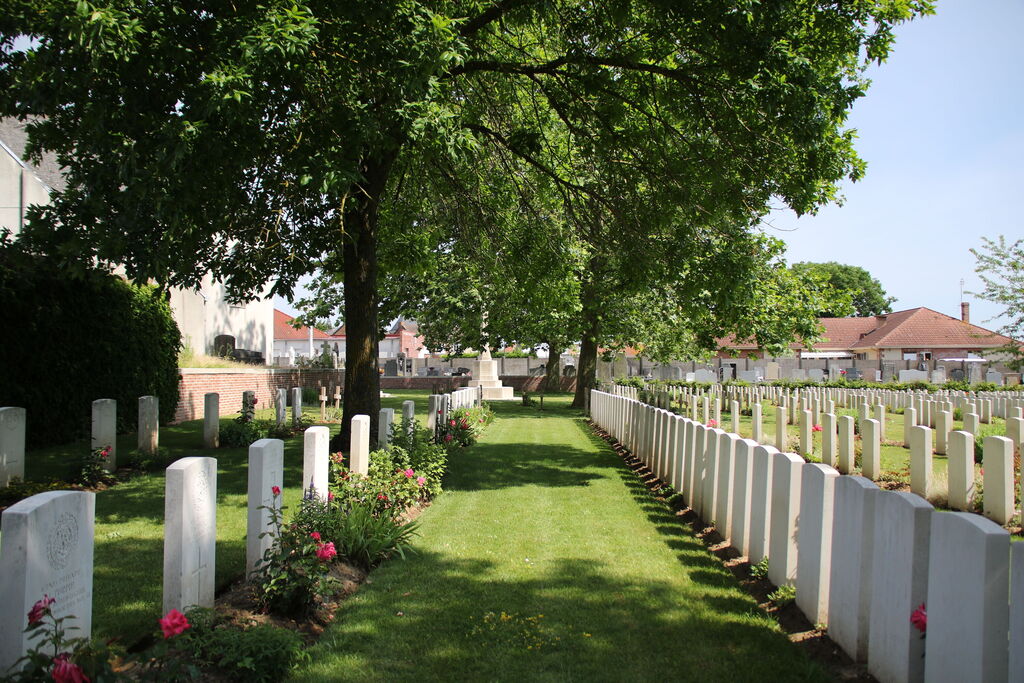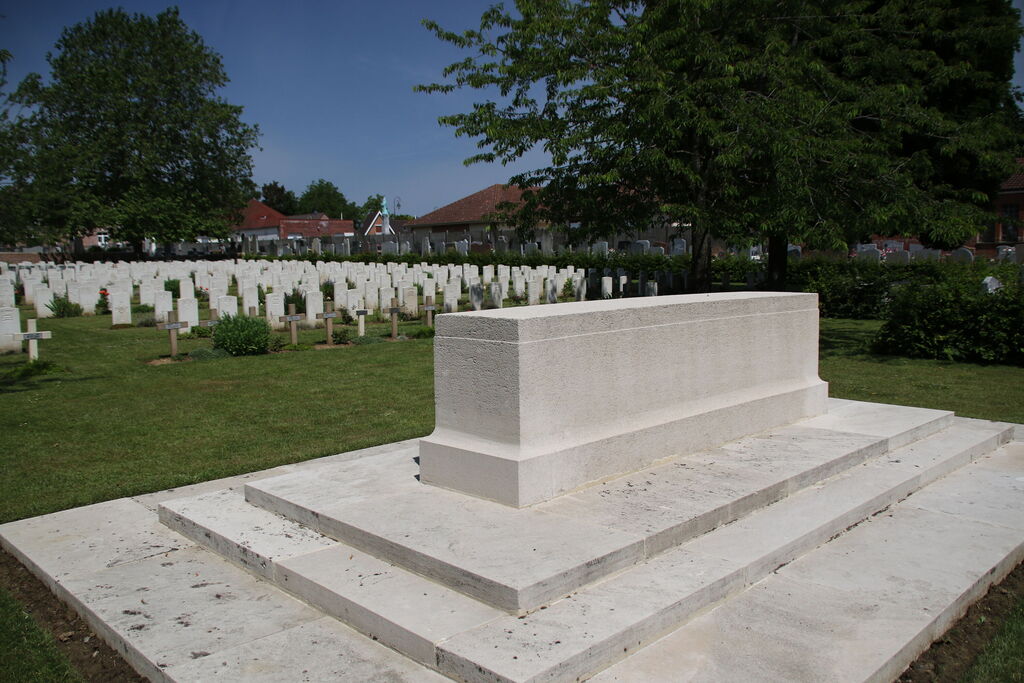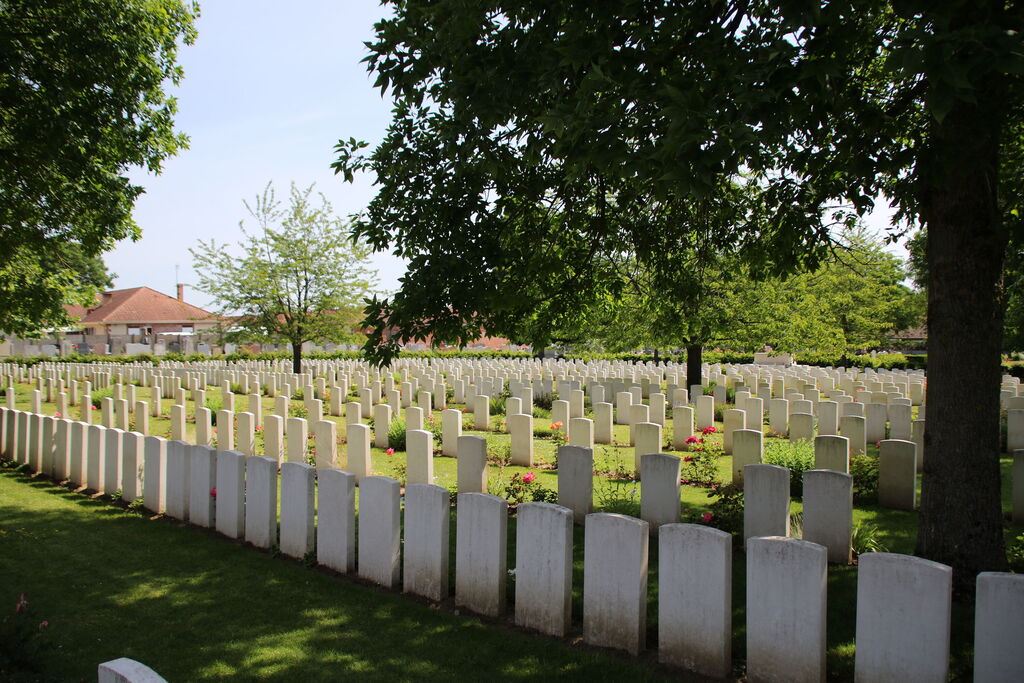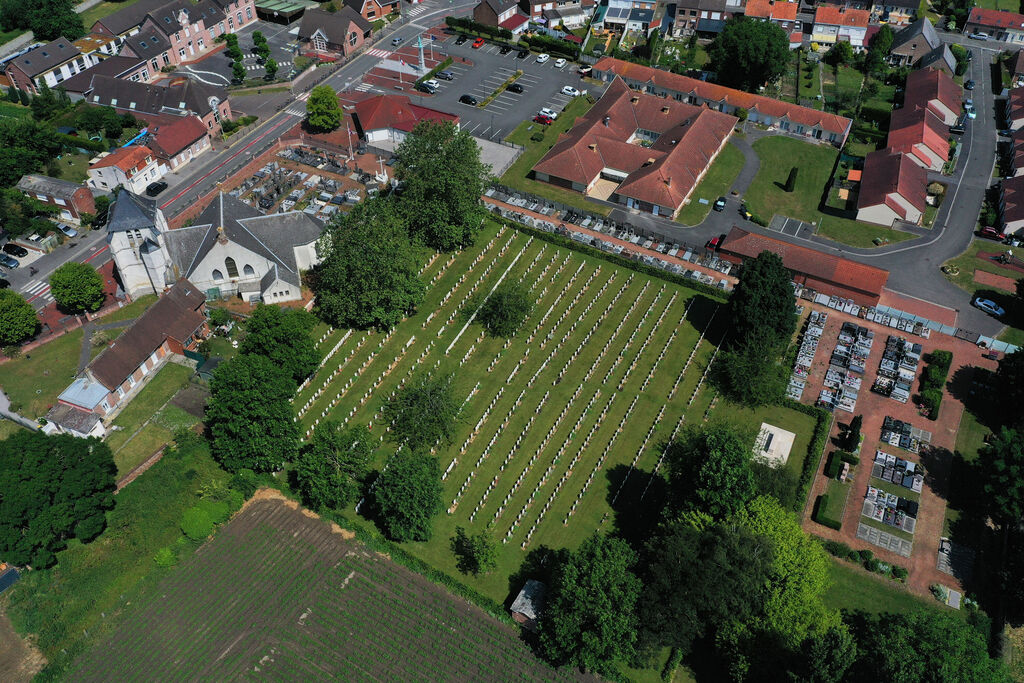Cambrin Churchyard Extension
- Country France
- Total identified casualties 1212 Find these casualties
- Region Pas de Calais
- Identified casualties from First World War
- GPS Coordinates Latitude: 50.51013, Longitude: 2.74138
Location information
Cambrin is a village about 24 kilometres north of Arras and about 8 kilometres east of Bethune, on the road to La Bassee. Cambrin Churchyard Extension is on the south side of the main road, 200 metres from the Mairie. The Commonwealth plot will be found behind the church.
Visiting information
Cambrin Churchyard Extension is open during working hours (08:00 - 18:00). If visitors find the gates locked during these times, please contact the Marie de Cambrin at:
94 bis boulevard Louis Lesage
62149 CAMBRIN
Tel: +33 (0) 321 63 26 63
Wheelchair access to this churchyard is possible, but may be by alternative entrance. For further information regarding wheelchair access, please contact our Enquiries Section on 01628 507200.
History information
At one time, the village of Cambrin housed brigade headquarters but until the end of the First World War, it was only about 800 metres from the front line trenches. The village contains two cemeteries used for Commonwealth burials; the churchyard extension, taken over from French troops in May 1915, and the Military Cemetery "behind the Mayor's House."
The churchyard extension was used for front line burials until February 1917 when it was closed, but there are three graves of 1918 in the back rows. The extension is remarkable for the very large numbers of graves grouped by battalion, the most striking being the 79 graves of the 2nd Argyll and Sutherland Highlanders and 15 of the 1st Cameronians (Row C), the 35 of the 2nd Royal Welch Fusiliers and 115 of the 1st Middlesex (Row H), all dating from 25 September 1915, the first day of the Battle of Loos.
Cambrin Churchyard Extension contains 1,211 Commonwealth burials of the First World War, 8 being unidentified. There are also 98 French, 3 German and 1 Belgian burials here.
The cemetery was designed by Charles Holden.







